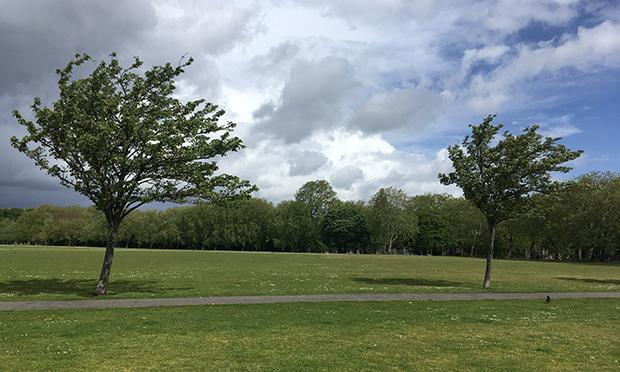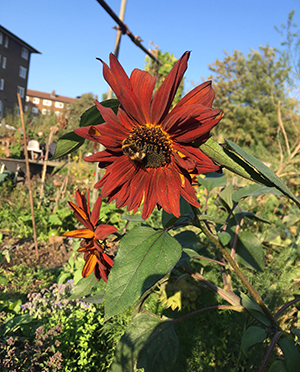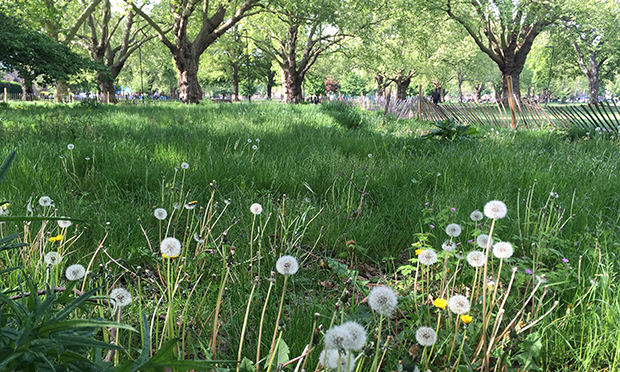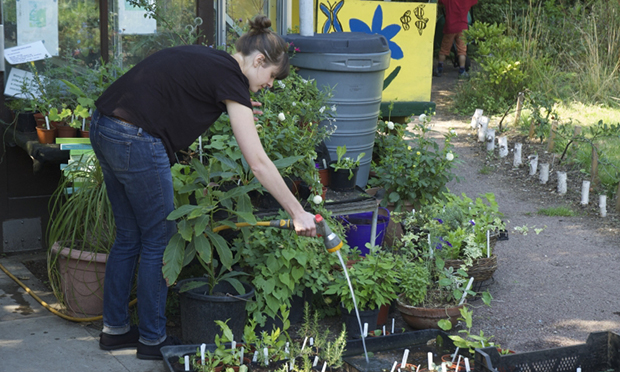The Citizen Gardener: Sowing in the wind

I went to a talk a couple of years ago at Hackney City Farm by one of my favourite garden writers, Alys Fowler. She mentioned something that has stayed with me since and steered my gardening practice: plants travel.
I had always thought of them of static (they don’t have legs or wings!) but of course they aren’t. They spread their seeds in different ways – some explode and are propelled over distance, some move with wind, insects, on the bottom of our shoes, stuck onto a bird’s food or feather or through their gut. They germinate and grow if they find the right conditions.
They move in other ways, too, which is visible if you put plants on a windowsill. You can see them reach towards the light. Trees will bend in the direction of the prevailing wind. Some desert plants roll in the wind and take root where they settle.
Cell contents of plants are constantly moving. Some flowers, like marigolds, close at night; others like evening primrose, open. All in order to propagate themselves; to carry on.
We, in our godlike way, like to stop all this and move them where we want them or stop them seeding where they want. Sometimes we know best – because we have the ability to foresee conditions changing. But mostly a plant ‘knows’ better and will grow well where it finds the right conditions.

The plants that are most mobile are annuals. They have one year to live and produce many, sometimes thousands, of seeds, which germinate easily.
In the wild these seeds will drop on the soil in late summer and maybe start growing then and slow down over winter or just bide their time till spring when they pop up and get on.
This tells us when we should sow annuals. Follow the natural cycle and get them going in autumn or wait till everything takes off in spring.
Annuals in the vegetable garden in the UK are often tender plants like tomatoes, beans, chillis, coriander, cucumber or squashes which won’t get through the winter (other annuals like lettuce, peas, broad bean, kale and broccoli are better able to survive the cold). Some, like chillies and beans, are actually perennials but we treat them like annuals and just resow every year.
Similarly in our flower beds and parks we often grow annuals. Recently the parks have been taking up the spring bedding plants (plants grown for the display their flowers provide) in preparation for replanting new ones. This keeps the parks looking bright and flowerful. And cheerful when we need cheer. But it’s a bit wasteful.
Bedding plants gained favour with the Victorians whose influence in the formal beds we still see. Plants like begonias, pelargoniums and pansies are traditional bedding plants. They are colourful but are very poor in terms of supporting insects as they often don’t provide any nectar and are sterile. But gradually more beneficial bedding plants are going in – still cheerful but less overbred: zinnias, forget-me-nots, alyssum and cosmos, for example.
Chatting to the park people the other day as they pulled up the annuals, they pointed out more perennial beds which won’t need this constant turnover.
There is another group of plants which flower and produce seeds in their second year before they die – biennials. If you don’t harvest carrots, for example, they will produce amazing flowers the following year. Other common biennials are foxglove, verbascum, beetroot and parsnip.
So, annuals and biennials are more mobile and unpredictable. You never quite know when they might pop up but if you can take your hands off the wheel of control, this can make your garden more interesting – and sustainable.
I have self-seeded rocket in random (to me) patches. I just let it do what it wants. I let most of my veg flower and drop seed so that I get kales, lettuce, feverfew, woad and coriander roaming where they fancy. It makes for a more adventurous plot.

Alys Fowler’s new book, Eat What You Grow, is in many ways about allowing plants to move as they wish but it also has an emphasis on perennial plants – a plant that will live for more than two years. They are often harder to get going than annuals but need less maintenance. Many die back in the winter and we often think they’ve had it but they spring back.
Some perennials last for hundreds of years (trees); others just three or four (perennial kale, for example), but they are the backbone of the garden or park. They have time to develop strong root systems, so generally don’t need much watering and can survive stresses like drought better.
The move towards perennial food plants via forest gardening and permaculture is gradually becoming more popular and is certainly more sustainable.
For the lazy gardener (like me) they are much less work – perhaps a bit of cutting back – because they are better at looking after themselves.
You can mix them into an ordinary garden like you would other perennials. Use garlic chives or Welsh onions, sorrel, sweet cicely, fennel, perennial broccoli, blackcurrants or strawberries amongst flowers.
More flowers than I thought are edible; solomon’s seal is supposed to taste of asparagus, fuchsias, campanula, violets, sedum, tulip flowers and even the new shoots of hostas are edible. Mixing edibles in will have the added benefit of confusing and diverting pests and give their predators food and habitat.
Support Our Gardens!

I want to highlight how important our gardens are – and how we can support them. Many have stayed open throughout the pandemic and provided important spaces for people in need.
St Mary’s Secret Garden is one of these. It’s open for the public and for sales (they have excellent plants) on Tuesdays, 10am-1pm.
Paula from the garden says: “It’s been a difficult year, but we have quietly been providing our services for our most vulnerable Hackney residents with complex needs.
“We are slowly and safely bringing other vulnerable and disadvantaged groups back to the therapeutic gardening sessions. On the good side, we are busy extending our marvellous singing hedgerow with more bird and pollinator-friendly native trees, and over the next few years will be filled with blossoms and berries.
“We are also ensuring our beneficiaries and volunteers know all about how they can keep themselves from Covid as part of Public Health’s and Hackney Giving’s Covid Messenger grant.
“We are looking at making a big loss of money last year, so times are a bit hard and we are currently seeking funds to replace the electrics in our glasshouse – so we can keep our plants and people warm!
“Donations would be welcome – an easy way is through our donate button on website that will take you to our local giving page.”
You can find the garden’s Local Giving page here.
Kate Poland is an award-winning community gardener and the UK’s first ever postcode gardener in E5. For more, head to cordwainersgrow.org.uk and friendsoftheearth.uk.
